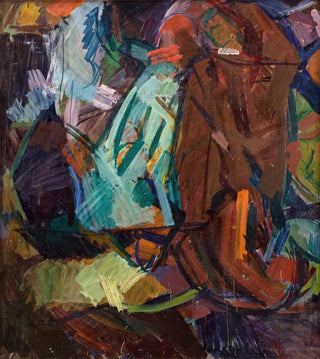Art print | Study after Dante and Virgil by Delacroix - Edvard Weie


View from behind

Frame (optional)
In the fascinating universe of art, some works transcend their era to become timeless witnesses of human creativity. The art print Étude d'après Dante et Virgile de Delacroix - Edvard Weie fits into this tradition, blending passion and reflection. This piece, inspired by Delacroix's masterpiece, evokes universal themes such as suffering, redemption, and the search for meaning. The encounter between these two iconic literary figures, Dante and Virgile, is depicted with an intensity that captivates the eye and the mind. Through this work, the artist manages to create a dialogue between the past and the present, inviting the viewer to delve into the depths of human emotions.
Style and uniqueness of the work
Edvard Weie's style is distinguished by a bold and expressive approach that brilliantly captures the complexity of feelings. In this art print, vibrant colors and dynamic brushstrokes combine to bring to life a scene that is both dramatic and poetic. The figures of Dante and Virgile, surrounded by turbulent landscapes, are rendered with psychological depth that challenges the viewer. Weie succeeds in capturing not only the essence of the characters but also the charged atmosphere of tension and mystery emanating from their journey through Hell. This stylistic treatment, both realistic and symbolic, gives the work an almost mythological dimension, where every detail contributes to the visual storytelling.
The artist and his influence
Edvard Weie, a prominent figure of the early 20th century, is often recognized for his ability to fuse the influence of masters from the past with modern sensitivity. His training, nourished by the major artistic currents of his time, allows him to develop a unique visual language that resonates with contemporary concerns. By drawing inspiration from Delacroix, Weie does not merely reproduce: he reinterprets, offering a renewed vision that questions and provokes. His work reflects an era in transition, where art becomes a means of expressing inner tumult and questioning.

Matte finish

View from behind

Frame (optional)
In the fascinating universe of art, some works transcend their era to become timeless witnesses of human creativity. The art print Étude d'après Dante et Virgile de Delacroix - Edvard Weie fits into this tradition, blending passion and reflection. This piece, inspired by Delacroix's masterpiece, evokes universal themes such as suffering, redemption, and the search for meaning. The encounter between these two iconic literary figures, Dante and Virgile, is depicted with an intensity that captivates the eye and the mind. Through this work, the artist manages to create a dialogue between the past and the present, inviting the viewer to delve into the depths of human emotions.
Style and uniqueness of the work
Edvard Weie's style is distinguished by a bold and expressive approach that brilliantly captures the complexity of feelings. In this art print, vibrant colors and dynamic brushstrokes combine to bring to life a scene that is both dramatic and poetic. The figures of Dante and Virgile, surrounded by turbulent landscapes, are rendered with psychological depth that challenges the viewer. Weie succeeds in capturing not only the essence of the characters but also the charged atmosphere of tension and mystery emanating from their journey through Hell. This stylistic treatment, both realistic and symbolic, gives the work an almost mythological dimension, where every detail contributes to the visual storytelling.
The artist and his influence
Edvard Weie, a prominent figure of the early 20th century, is often recognized for his ability to fuse the influence of masters from the past with modern sensitivity. His training, nourished by the major artistic currents of his time, allows him to develop a unique visual language that resonates with contemporary concerns. By drawing inspiration from Delacroix, Weie does not merely reproduce: he reinterprets, offering a renewed vision that questions and provokes. His work reflects an era in transition, where art becomes a means of expressing inner tumult and questioning.






